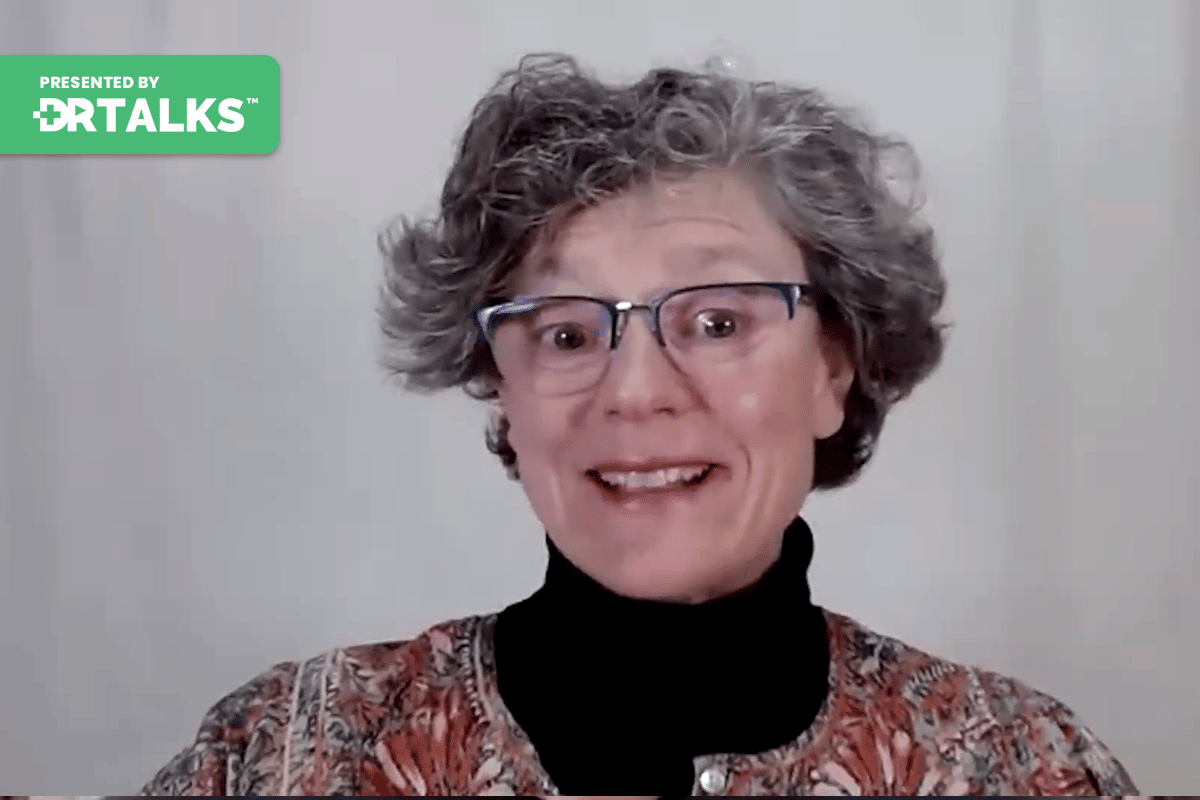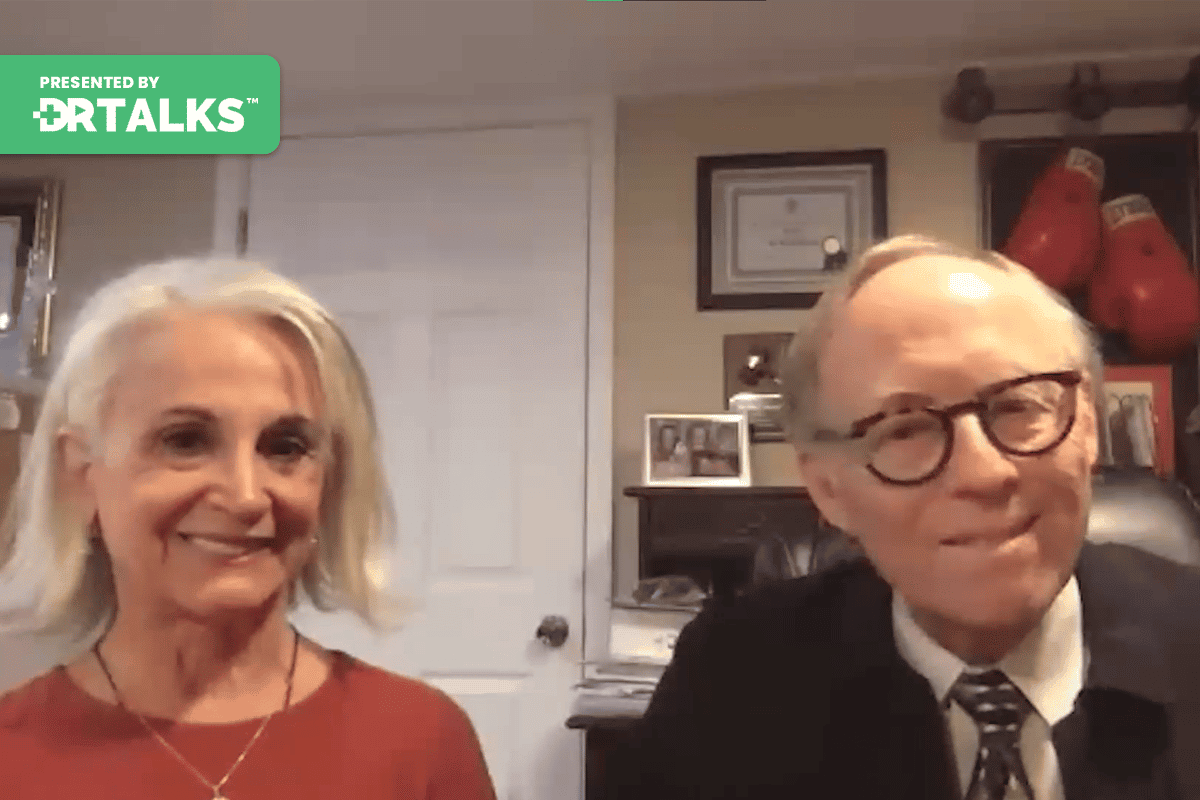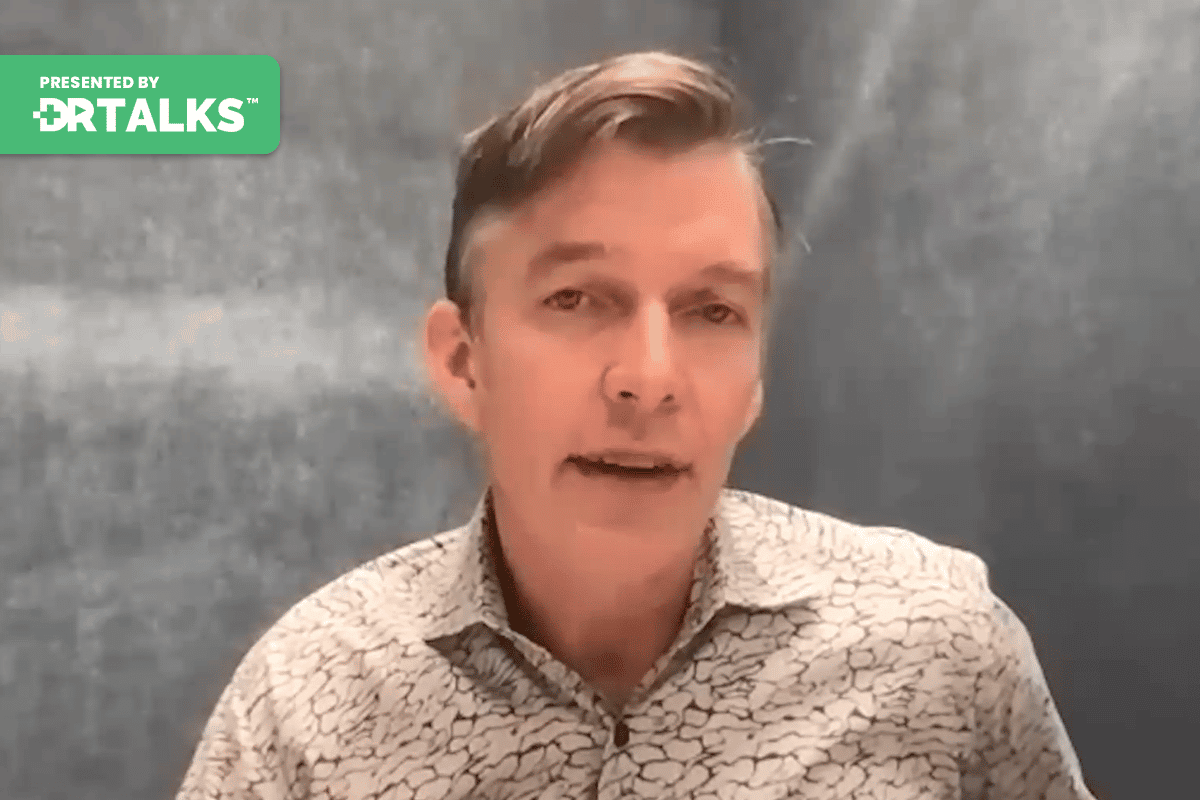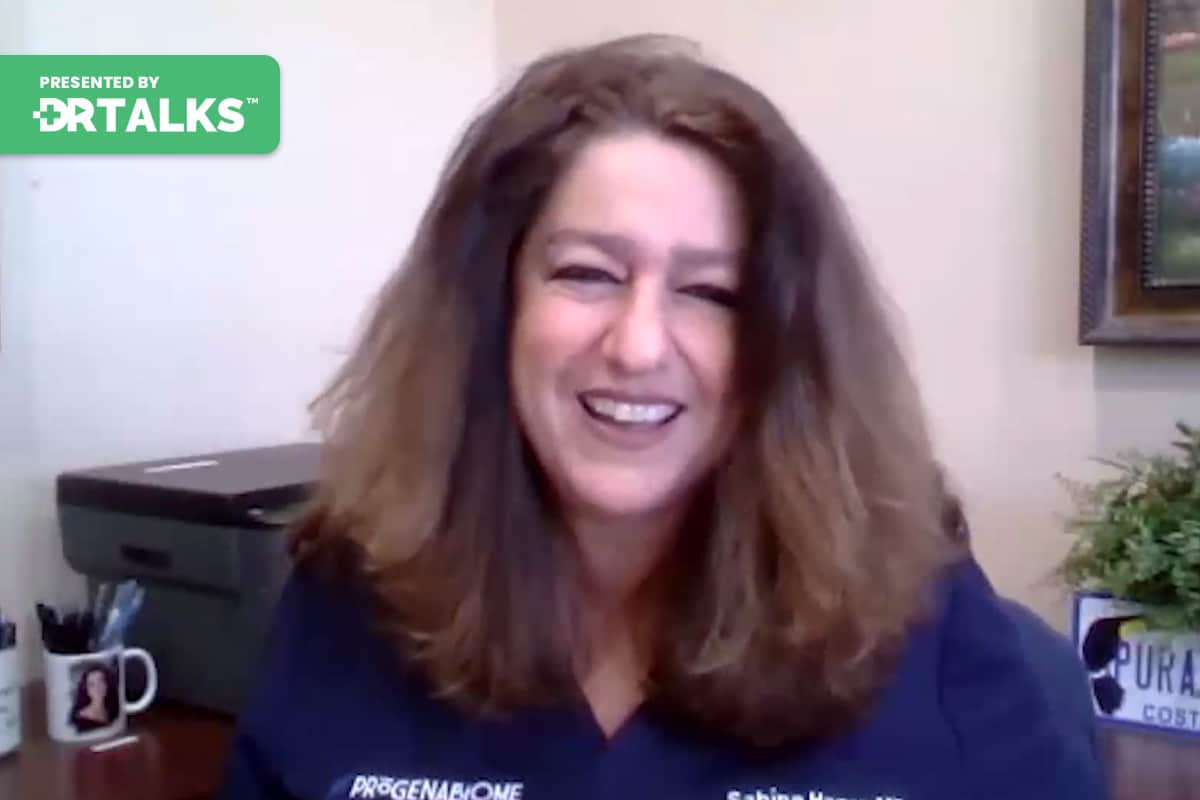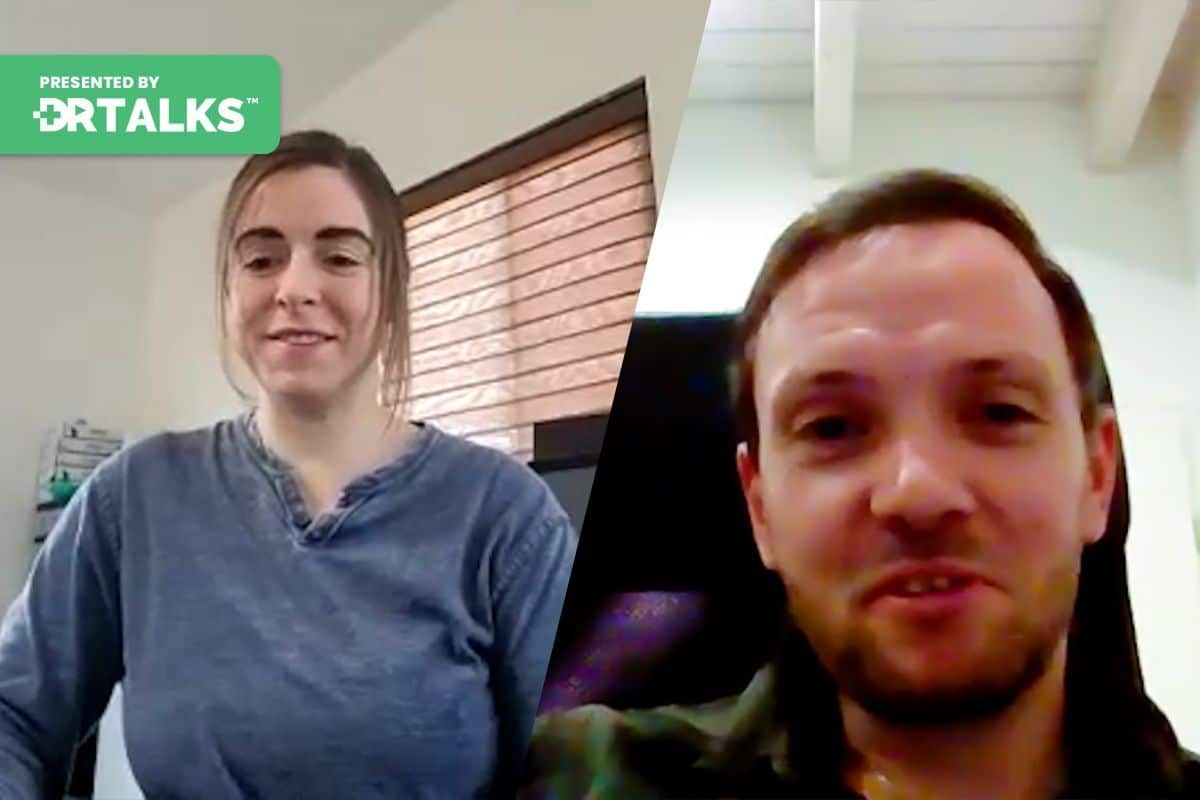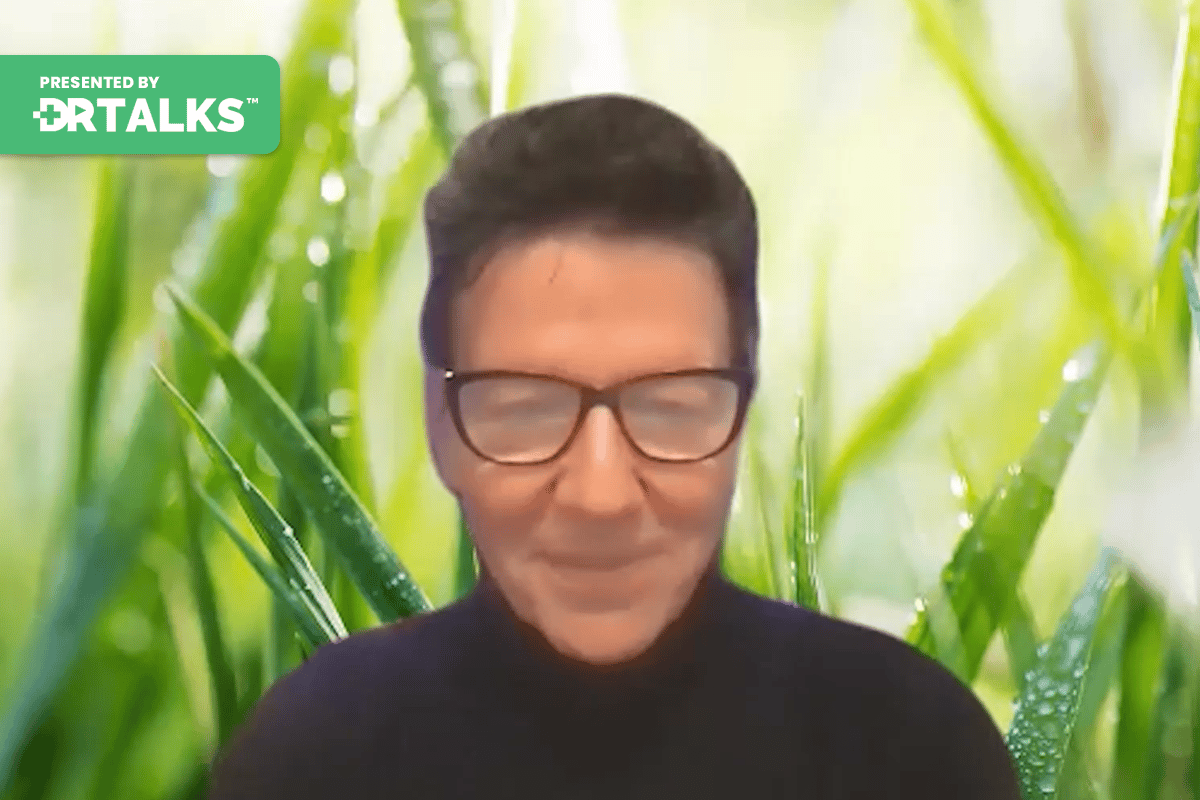Join the discussion below
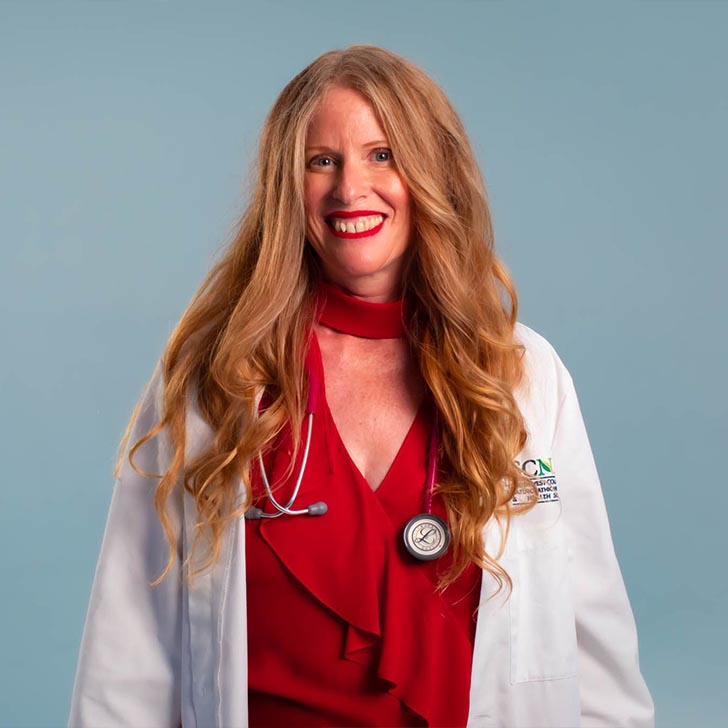
Dr. Sharon Stills, a licensed Naturopathic Medical Doctor with over two decades of dedicated service in transforming women’s health has been a guiding light for perimenopausal and menopausal women, empowering them to reinvent, explore, and rediscover their vitality and zest for life. Her pioneering RED Hot Sexy Meno(pause) Program encapsulates... Read More
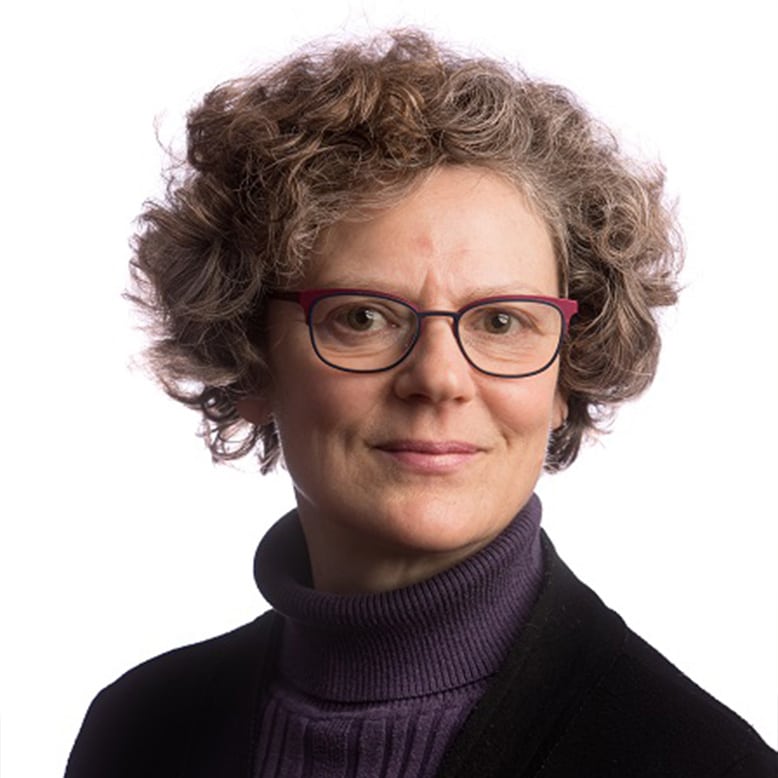
I am both a person with lived experience and a health care professional. I became ill with ME/CFS, FM and MCS in 1989 during my second year of psychiatry residency. Subsequently I have been diagnosed with several related conditions including, Lyme disease, orthostatic intolerance, joint hypermobility and Mast Cell Activation... Read More
- Why lifestyle modification is a biomedical intervention
- How to achieve restorative sleep to support recovery
- The special sauce for rewiring the brain for healing
Dr. Sharon Stills
Hi everyone, Welcome back to The Long Haul covid and Chronic Fatigue Summit. I am your co-host Dr. Sharon Stills, always an honor and a privilege to be here with you all for this very, very important topic. And today I’m going to be speaking with my new friend and colleague about lifestyle modifications and I’m so glad we’re taking a whole interview to really talk about this because we tend to always want to grab the high tech fancy stuff and you know, I love the high tech fancy stuff, don’t get me wrong, but if we don’t layer that with the foundation of good lifestyle modifications, we’re missing out. And often if you do that foundation and layer with lifestyle modifications, you’ll see you might know not even need the fancy high tech stuff. So it’s really important that when we heal we’re setting the foundation of a healthy home just like we would if we were laying a foundation for a home that we would live in and we certainly live in the homes of our bodies. So I’d like to introduce you today to my guest Dr. Eleanor Stein, who is not only a psychiatrist, a licensed physician, but she also Has been a patient and so she brings to you the experience of both being a patient and going through what you may be going through and also the flip side of treating patients and helping them.
She was diagnosed on her own in 1989 during her second year of psychiatry residency with chronic fatigue fibromyalgia, multiple chemical sensitivity, the whole basket. And since Then she was also diagnosed with Lyme disease, Orthostatic intolerance, joint hypermobility and mast cell activation syndrome. And so some of you listening maybe like, oh yeah, I had to, I have that too. So she really gets you because she has been there. So she has devoted her career to learning more so she can help herself and ultimately others. And she struggled for a long time for 27 year. And in 2017 her health improved substantially and she was able to return to activity. She loved and surprisingly, the things she were doing at that time were all low tech things that we’re going to talk about today that you can implement into your life right away, sleep strategies, diet, pacing, neural plasticity to rewire her brain and actively looking for hope. So she is very passionate about teaching these strategies to patients and online participants. And we’re lucky enough to have her here today with us to share and teach all of you so that you can walk away from this conversations with some things that you can implement right away. So welcome Welcome to the Summit. That it’s really great to have you here.
Eleanor Stein, MD
Thanks so much, Sharon. It’s a pleasure to be here.
Dr. Sharon Stills
You’re welcome. So I always ask typically, you know, how did you end up here? What is your story? And I alluded to it a little when I was introducing you, but perhaps you could really just tell us your story so the listeners could understand where you’ve been.
Eleanor Stein, MD
Yeah. You know, I was pretty active and healthy as a kid, I did a lot of sports. I live in Canada. So I was a figure skater, a soccer player, long distance runner, like activity was a big part of my life and then medical school is a little bit of a stress, right? You’re constantly on call, Working long shifts. And I kind of sensed even before I became ill, I sensed, you know, I wasn’t quite as robust as some of my colleagues, they seemed to be able to do those long shifts and not really pay for it and I would be, let’s say, pretty tired after a shift, spending a lot of time sleeping. But then in 1989, things really shifted and I just wasn’t recovering. Some of you who have had M. E. C. F. S for a long time will know that it was only defined in 1988 by the Centers for Disease Control. So in 1989 I mean, nobody knew anything. And probably like many of you, I went to the local expert who diagnosed me with depression. She was also a psychiatrist and I thought I don’t really feel depressed, but like, what do I know? I’m the patient here.
So I really struggled with no good advice, let’s just say so I did everything wrong, right? I tried to exercise my way out of my condition and I’m sure some of you have tried that. If you haven’t tried it yet please don’t because it’s gonna be unsuccessful and it’s probably gonna set you back quite a bit. And I really I didn’t have any hope because I just didn’t have information. I had no idea what to do for about eight years until I met another physician who also had me cfs and fibromyalgia and M. C. S. And she was the first one who started teaching me some of these basic lifestyle things like pacing for example that started stabilizing my health enough that I was able to work part time. You know have a little tiny life let’s say. I tried everything I went you know I’ve been to like hundreds of conferences functional medicine tests environmental stuff supplements I. V. S. Some of you know or have heard of Dr. Paul Cheney I went and saw him and did his buffalo goo like you name it. I’ve probably done it. And nothing like I think it kept me in the game but it didn’t really move me ahead sustainably. But I kept trying different things and then like Sharon said in 2017 I all of a sudden realized like a month or two had gone by. I realized I was getting up earlier feeling more refreshed. Having longer days my brain was clearer even my blood pressure felt a little bit more stable. Oh I could stay up later I could do stuff in the evening instead of crashing out at six p.m. So my life just got a lot bigger. I was able to exercise more without crashing. Like it was a very significant change. So of course I reflected okay what what just happened and I think what happened for me is I had been fine tuning all of these lifestyle modifications over many years. I had been charting, I was using heart rate monitors, you know, all of those tools and I think I finally got it right for me and what I know from working with patients is we’re also individual. So I don’t want to say this worked for me, you should all go out and do the exact same things that probably won’t work for many of you. But what I did learn is that paying close attention to my body and then responding accordingly. Like actually listening to it and doing what my body is hinting at me to do or sometimes screaming at me to do actually can work.
And like Sharon said at the time I got better. I was doing nothing fancy, I had pretty much given up right, I wasn’t doing IV’s supplements, any off label drugs. I was just doing like the core basics to support my body and after that I started working differently with my patients because up until that point I thought it wasn’t possible to get better because I had tried everything and nothing really worked. And so after that I started saying to my patients, you know what it’s possible to get better. Like put some effort and pay attention and more and more of my patients have been improving. So I like they’re not cured, right? Most of us aren’t cured. I’m sure I still have many vulnerabilities that if I went nuts in my lifestyle, I could be back where I started. So I’m humble about it. But many people can improve, I think more than we previously thought. So that’s kind of my message. It is possible to improve.
Dr. Sharon Stills
Well, a very powerful message because we know the power of the mind and if we’re hopeless, we’ve right away put a roadblock up to our healing journey. And so I’m very fascinated by this. As I said in the beginning as a naturopathic physician, lifestyle modification is such a huge piece. And that’s why we’re taking this time to talk about it. Because it’s so often I see in practice, patients come in and they just want the pill, right? They come to me, they don’t want a pharmaceutical, they want the vitamin pill or the herbal pill and they don’t really wanna think about all the lifestyle things and it’s a re education. It’s how society, society has taught us we heal through pharmaceuticals, We heal through popping a pill. And that’s very false. I created. One of my favorite hashtags I created is not all medicine comes in a pill bottle, it’s a long hashtag. And then I’m like inferences even a vitamin pill bottle, it really comes with the things we do. So let’s talk about these different things and how you view them and what you’d like to share with the listeners and tips. And I’d like to start with pacing because that’s not something you hear about very commonly. And so first by defining it because I’m sure there’s a lot of people listening who are saying like what does that mean?
Eleanor Stein, MD
It’s so interesting because I had a patient just actually it was I think of course online course participant just recently who wrote in her feedback survey, I’ve heard the word pacing for decades. I never really knew what it was or how to do it now that I understand it. You know, my my health is stabilizing and improving. So my definition of pacing is too, we all have what we call an energy envelope. So an M. E. C. F. S. World, you know, this is like a big term. So the energy envelope is we wake up in the morning, how much energy do we have for the day? And some of you have heard of the spoon theory.
So some people say, well I woke up with so many spoons and then you have to know how many spoons every activity costs you. So you can wake up with 10 spoons. But if making lunch costs you 12 spoons, you know, you’re in a bit of trouble. So you gotta know how much energy you have and how much energy the different activities that you have scheduled in your day will cost you. And pacing means keeping a positive energy balance. So not spending all your spoons, basically getting to the end of the day and having a little bit of reserve.
Dr. Sharon Stills
Excellent. And so how does someone figure out like how many spoons? Cause you how many power
Eleanor Stein, MD
It’s called charting. So charting is the least favorite thing that I teach everybody groans. But when I’ve been teaching groups, I’ve been teaching these skills to people for over 20 years and people fill out the evaluations. You know, what was the thing that really helped you the most? And pacing and charting because you have to chart, you have to keep track in order to pace well. So pacing and charting consistently comes out is the single most effective strategy. So I’m glad you, you know, you picked up on that and we’re starting with it. So what I do is and now there’s apps, right? So in the olden days we had these complicated paper and pencil charts. Now there’s apps so you can, when you wake up in the morning, estimate your energy in me Cfs world. And I think this could easily apply to long covid we usually rated out of 100. 100 means full health, 0% means death. It’s called the Karnowski energy rating scale. It’s, you can look it up online, it’s easy to find. And then you rate how much energy you have left at the end of the day and you write down all the stuff you did during the day. So that’s the way you can figure out how much energy each thing costs you.
Dr. Sharon Stills
Mm I love that. When I struggled with chronic fatigue and Epstein barr years ago, I remember like going to the sink and doing my hair. That was probably like 200 spoons. I didn’t know about pacing and probably would have done my hair a lot less, but that would just wipe me out and I’ll be back in bed for hours. That was like the global event of the day.
Eleanor Stein, MD
A lot of people self care is more than they can manage. And often things where you have to be upright because blood pressure is such an issue and things with hands above the head, you know, for some reason are especially difficult. So you might think, well why is washing or blow drying my hair so expensive? We don’t know exactly, but it is right. So if you notice that it costs you a lot of spoons, you may want to do it less and save your spoons some days for other things that are more fun.
Dr. Sharon Stills
So it’s really you know what I’m hearing you say is it’s really a way to really get in touch and pay attention to me. I teach a lot of mindfulness and it’s making me think of mindfulness. Like I say the definition of mindfulness is paying attention moment by moment on purpose without judging yourself for being kind. And this sounds very mindful like paying attention to your energy levels to what you’re doing to how they affect your energy levels. So you can pace yourself.
Eleanor Stein, MD
Yes. And paying attention is really important because one of the pacing tips is to look for the early warning signs of a crash. So in M. E. C. F. S. And I have a lot of patients and course participants now with long covid, they report virtually identical symptoms. So most people get something called post exertion all Malays meaning you do a physical cognitive or an emotional activity and you pay for it and paying for it usually means that all of your symptoms get worse and they get worse for more than 24 hours.
That’s the definition of P. E. M. Or post exertion. All Malays. And the goal of pacing is to not crash because every time you crash it means you’ve totally exhausted your energy. Now say something unexpected happens and you’ve got zero spoons left but you have to rise to the occasion. Say your child gets sick, your dog gets sick, you have to attend to some emergency and you have no spoons in the energy world. We have a credit card, it’s called adrenaline. So you put that charge on your credit card now you’re wired on adrenaline. Now the night comes, you can’t sleep because you’re like, boom, boom, boom, right, And now the next day is horrible as well and post exertion, all Malays by definition lasts more than 24 hours, but the more you’ve overdone it, the longer it lasts. And so it leads to what we call the push crash cycle, where you’re just constantly playing catch up and when you’re constantly paying, playing catch up, the body can never get ahead. The body has no energy left to heal. And some of you may be familiar with Dr. Robert Naviaux videos work about the cell danger response in the healing cycle. And my observation over time is that people who pace carefully and have some reserve energy are much more likely to kick start the healing cycle and get significantly better.
Dr. Sharon Stills
So are there specific signs of pushing it that the listeners should be aware of or looking for?
Eleanor Stein, MD
You know, it’s very individual. So it’s whatever you’re like, say in me Cfs or long covid, most people have physical fatigue, meaning their body feels heavy. They usually also have brain fog or cognitive fatigue. They can’t think clearly. They often have done refreshing sleep. They often have gastrointestinal discomfort, irritable bowel symptoms. They often have pain. Usually fibromyalgia type pain can be quite severe. They have the dizziness, the low and unstable blood pressure, and the chemical sensitivity, hyper sensitivity to light, sound, all of those things. So whatever symptoms you have, those are the ones that are going to get worse if you’re heading for a crash, and I tell people look for the early warning signs and stop right away.
Dr. Sharon Stills
And is there, I just think about, like, there’s so much going on day to day between work and family and self care errands. Are there any tips for people to pace, how to how to choose what stays, what’s non negotiable,
Eleanor Stein, MD
I guess again, that’s gonna be individual for each person. So it would probably be helpful. I get people to do an activity log, meaning, say even for a week, you just write down one or two words in each hour of the day what you did and you’ll very quickly get a map of how you structure your days and one of the tips. So I can’t decide for people of course what’s more important, Right. What might be non negotiable for me might be negotiable for someone else, but what I can say is if you do an activity log, you’re gonna see the pattern of your days and the most common pattern is you get up, you do as much as you can. You push through at some point in the mid to late afternoon, you crash and the rest of the day is pretty non productive because your body and your brain are offline. So one of the strategies is called chunking to break activities up into smaller chunks. So maybe you do something that you really need to get done, you work on it for half an hour, you set your phone to alarm and tell you okay, time for a break, you rest for maybe half an hour or an hour. It depends if you’re more severely ill, the rest have to be longer. And then you go back to it. Now people hate this, they protest, they say I’m never going to get anything done, you don’t understand my life. But almost all the time when people use that strategy, they actually end up getting more done because they can work through the entire day in little chunks and then they’re not crashed the next day when you crashed the entire day is a write off. Right? So the goal is to have these, maybe it’s half hour chunks if you’re severely ill, it might be five minute chunks. But they add up, I call, I’m big on baby steps, so they add up and a whole bunch of chunks consistently day in and day out are gonna add up to a lot more productivity than if you push crash and now you’re out of commission for a few days,
Dr. Sharon Stills
I think even if you’re not struggling, that’s still a really great way to work to give your brain a chance to rest and to stop. So I love that tip. So let’s get into the lifestyle modifications. I know you have sleep on there and I’m obsessed with, so why don’t we sleep?
Eleanor Stein, MD
A bunch of studies came out, gosh, like 20 plus years ago suggesting that a strategy called cognitive behavior therapy for insomnia, which I’ll explain in a minute was helpful for people with fibromyalgia and me Cfs. And I remember at the time reading that study and thinking it was akin to torture and I was totally unwilling to try it even though my sleep was horrible, right? And I was on sleeping medications for years. And then finally I got desperate because the meds weren’t working anymore. So share them. When you said something about not every successful intervention comes in a pill, I couldn’t agree more because you take a pill, it kind of tricks your body in the short term and then it wears off and over time the body tends to build up tolerance. So things pills especially for things like sleep and pain, don’t tend to work as well over time.
So finally, I got desperate, I tried it for myself, it dramatically improved my sleep and I went, oh my goodness, kind of be more open minded. So I went and did some training and read more about it. I’ve been kind of including it in my program for several years and I’m consistently surprised. It’s so simple, it doesn’t look very fancy or exciting. And yet it’s so helpful. So some of the core principles, I mean there’s many, but just some of the most helpful ones. One is two. It turns out the research shows that if you can keep your sleep wake cycle consistent meaning you go to bed and wake up at the same time, the quality of sleep is better. I don’t know why. I guess the body likes routine probably in lay terms. Now you can’t really control when you fall asleep, right? The body has its own ideas about that, but you can control when you wake up. So one of the most helpful strategies is to set your alarm at the same time every day, even on weekends, even on holidays. I know that’s brutal. And people are like, no, no, no, I don’t want to do that, I want to sleep in. But again, big picture, you set your alarm for the same time every morning, you get up and then to give your brain the message that it’s daytime, it has to have some blue light. And the most effective way to do that is to go outside. Now I live in Canada and this Sunday. Well by the time this the viewers are seeing this will be February, but right now it’s December and this Sunday, the high is gonna be minus 29 C. So okay, not every day. Is this a realistic strategy but as often as possible, especially if you live in a warmer climate, try to go outside within the first hour after dawn And what that does is and the light has to go in your eyes, so don’t wear sunglasses, that’s the one time, 10 minutes. That’s all it takes. You don’t have to exercise, you just have to sit there even if it’s a cloudy day, even if you live, you know with a high latitude doesn’t matter, Sunlight is 50 times stronger than sitting in front of a window looking out at the light. So getting outside every day, the people you know who I work with consistently say this is probably the single thing that made a big difference.
Dr. Sharon Stills
And just to be clear, they just have to be looking up at the sky.
Eleanor Stein, MD
They don’t have to be looking at the sky. The sun is still coming into their retina.
Dr. Sharon Stills
So you could just be sitting in your chair looking,
Eleanor Stein, MD
You could be sitting reading,
Dr. Sharon Stills
Okay, Okay.
Eleanor Stein, MD
That’s a blanket
Dr. Sharon Stills
Like like five blankets And that’s why I don’t visit Calgary because the high is gonna be negative because I’m complaining in Arizona that it’s freezing because it only hit 50 today. So everything is relative, but that’s such a powerful tip that really helps to set your circadian rhythm and helps with hormone production and and is free and is accessible even if you’re in an apartment, you can sit on your patio or your balcony and such a good way. Is there a time that you recommend? People set their alarm clock? Like what if someone, like you said it for 11 every morning?
Eleanor Stein, MD
You know what? 11 is fine, like everyone’s different. What I say is you all probably know when is the sleep window where when you personally get your deepest sleep. So you wanna have, you wanna be asleep at that time or have that the possibility to be asleep during the time where you get your most restored sleep. And that’s gonna be super variable for, you know, some people are early birds, they get, we all get our deep sleep early in the night, but some people go to bed at nine and get two or three hours of deep sleep right away. And some people can’t fall asleep before three in the morning. So I would say it doesn’t matter. But for most people, you wanna sink your personal biological clock with the sun because that’s going to give you the most powerful biological messages. And one of the things about lifestyle modification is you wanna take advantage of your body’s biology, right? You don’t want to fight it. So the sun is the most powerful center of circadian rhythm and you want to try to leverage that and work with it and then the going outside is ideal in the first hour after sunrise. So ideally you know if the sun is getting up at six or seven that’s probably when it’s going to be best for you to get up.
Dr. Sharon Stills
And so a couple other questions, is there a length of time? Like do you subscribe to, you need to get your eight hours sleep?
Eleanor Stein, MD
You know what? We’re all very different as I’m getting older when I was very ill I was sleeping like 14, 16, 18 hours a day. I mean I just couldn’t get enough. And bizarrely now that I’m a lot better. I’m sleeping 6 to 7 hours. I never thought that would happen in my lifetime and I’m waking up refreshed like seven if I get over seven I’m delirious. I feel so good. So I would say it’s gonna be different for everyone.
Dr. Sharon Stills
Do you have a stance on napping?
Eleanor Stein, MD
Yes. You’re asking all the good questions. It depends on severity of illness. So for people who are severely ill and again in the M. E. C. F. S. Long covid world that’s usually defined as having a daily energy level of 50% or lower 50% means you can only do one or two light tasks during the day. You have to lie down and rest or you just you know I can’t make it through the day. So for people that are severely ill napping is absolutely acceptable if you’re able to nap. So one of the cruelties of me, CFS and long covid is that many people are beyond exhausted but they can’t fall asleep because their autonomic nervous system is revved by that adrenaline, Right? So what happens when you pace is not only does your energy get better, but your sleep gets better? And then it’s like this domino’s where everything else starts getting better.
Dr. Sharon Stills
And one last question before we move on sleep. You know, a lot of people say sleep is important, but you specifically said restorative sleep. And so could you speak to what that means? And how does someone know that their sleep is restorative? Do they need to wear an oura ring and track it? Or can you tell symptomatically, if you can speak a little too that
Eleanor Stein, MD
You know what for me, this ring has been transformative. I’ve had it for a year and a half. It told me super important information. For example, for me, I wasn’t getting enough rem sleep. I’ve made some changes to my regime to improve that and it’s made a big difference. So I would say in general, my passion for lifestyle modification is that it’s free, right? How you, when you go to bed when you wake up, how you pace that’s accessible to every person no matter your social circumstances. But if you can afford a tracker, it will help you in a couple of ways. So something like the, or a ring helps you understand if you’re restored because it has a measure called, what’s it called? I’m blanking measure every morning. It tells freshman index or something like that. But it’s not for everyone. So just to go back to pacing, say you’re someone who has Ortho static intolerance, meaning your blood pressure is low your hardest pounding. You know, you’re feeling dizzy and nauseous.
Then the better tracker for you is going to be one that has real time heart rate monitoring so that as you’re going through your day and the ideal tracker for you if you’ve got heart rate issues, is one with an alarm on it. So you can set it for say 100 and 10 or 100 and 20 beats per minute. You don’t have to pay attention to it because that’s exhausting. And it will be if you go over that and it will be like a biofeedback tool to remind you to slow down. So yes, I would say if you’re gonna spend money on one single thing because you have, you know, most people I work with have very, very limited incomes because they’ve been sick for a long time. They’ve been on disability, they’ve kind of spent a lot of their savings on trying to get better. That’s why I’m so passionate about things that are free, but I would say if you’re going to spend money on one thing, a tracker would be a really good investment because it’ll give you information that you just can’t get any other way.
Dr. Sharon Stills
And you said that you were low in rem, I believe your sleep. So what kind of things did you do to to change?
Eleanor Stein, MD
Well, I’m taking an evil medication. So I was on a sleep medication and much, much lower dose than I ever was on before and I realized that one won’t help me with rem. So I changed medications and now my room is in the normal range, which is amazing.
Dr. Sharon Stills
And I said I wasn’t gonna ask any more sleep questions. I have one more so you talked about and I understand, I say this to patients to and it’s kind of hard to say it’s Christmas morning and you still got to get up with your alarm. But what about the other side? What about it’s a Saturday night and you, you know, if you’re up to it and you want to go out, can your bedtime vary or does that have to be the same?
Eleanor Stein, MD
No, absolutely. The bedtime can vary. So the primary tool to make sleep more restorative believe it or not, is to shorten your sleep window. So this is counterintuitive, right? Most people think the longer I stay in bed, the more sleep I’m gonna get and the better I’m gonna feel it actually doesn’t work because if you’re not sleepy enough when you go to bed. So the ideal state is to stay up until you’re so sleepy that, you know, you’re gonna fall asleep within 20 minutes. That means you go to bed, you’re very sleepy, you’re going to fall into a nice deep sleep right away. You’re gonna wake up fewer times because your sleepiness is high, your sleep drive is high and you’re going to have probably a consolidated but better quality sleep. So it’s very counterintuitive.
Dr. Sharon Stills
So if you do, stay here, you’re just going to get you still get up early so you’re gonna get a sleep that night
Eleanor Stein, MD
And that means the next day you’re gonna be tired, cranky maybe at me because I’m the one who told you to do this next night, You’re going to get an awesome consolidated good quality sleep.
Dr. Sharon Stills
Okay? So you also have diet as one of these lifestyle modifications. So what do you have to say about that?
Eleanor Stein, MD
That is so there’s an amazing podcast by Dr. Aaron Siegel, He’s a Israeli, really amazing researcher and it’s called, what is the ideal diet for humans and spoiler alert. So you don’t have to listen to this, but there isn’t one, right? That’s the bottom line. So he talks about using tissue glucose monitors the one that you put in your arm again strongly recommended if you can afford it because it will tell you for your individual body how you react to food because there’s no such thing as a good food and a bad food, It’s what’s right for you. So in general, I’m a proponent of a lower carbohydrate load, meaning less starches, less screens. But again, some people tolerate them fine. So that’s a general comment, but if you measure your own reaction to food, you’re gonna be able to fine tune it to yourself.
For me personally, the diet I went on shortly before I improved is called the paleo autoimmune. Some of you are obviously you’re familiar with it, pretty restrictive diet, so I definitely don’t recommend it for everyone, but if you have any autoimmune issues, like for me, I think it was incredibly significant and when I cheat because it is a restrictive diet and it’s pretty hard to be perfect. Some of my symptoms come back within a few weeks. So I would say my big message around diet is probably you have to try a few diets and again, observe your body carefully and notice which one helps you feel better. And as difficult as this is kind of view food as a tool for health. Maybe more than say, just a pleasure like, eating to live rather than living to eat to the extent that you can do that.
Dr. Sharon Stills
Yeah, I think when you use food in that manner, you can turn that into a pleasure because you get the benefits of feeling good and again, I think we have pleasure kind of confused in our brains often and feeling good is one of the greatest pleasures we can experience in a human body and so and I like that you said you know you you you cheat that you’re not perfect
Eleanor Stein, MD
Not perfect especially with right? That’s the toughest one
Dr. Sharon Stills
There’s permission. You know we do the best we can do but sometimes being so rigid can be more of a problem than allowing yourself some flexibility to be as you said human. So you’re a plasticity. You say this is like the special sauce. Secret sauce special sauce from Mcdonald’s that I’m thinking about growing up. So talk about what does that mean? What is neural plasticity? How do you utilize it? Why is it the secret sauce to you
Eleanor Stein, MD
Prior to becoming better? I had started a daily you’re a plasticity practice for a few years. When I first I started it because I wanted to address my multiple chemical sensitivity and I had had some patients do some courses and get a lot better. So that gets my attention. I did I started a practice and I got better literally within a week with regards to my M. C. S. It wasn’t totally gone but I was probably 80% better and mine was very severe. I had had my entire life like I never remember a time when I could be around strong smells and then over the subsequent time, you know, that’s like 78 years ago, I’ve continued to work at it and I would say I’m 100% better so I can go anywhere anytime, it’s awesome. So that got my attention and I thought, Huh? You know what if it can work for that, maybe it can work for other things.
So basically what a neural plasticity practices is that we’re trying to learn, we’re trying to teach our brain different reactions to what’s happening in our daily life. So neural plasticity means the brain is constantly changing every time I do something, a thought of feeling or an action, all of the neurons involved in that action. Fire at the same moment to enable me say right now, talking and they hardwired together and the more often I do a certain experience the more and more neurons fire together to make that experience stronger and easier. So for example if you remember when you learned how to play an instrument or you learned another language or you learned to walk at first, it’s so difficult because you have no neurons, you know, you’ve got like one or two little connections and it’s so you have to like take all your attention.
But you practice and practice more and more neurons connect the pathways get stronger and stronger. We call it like they become like superhighways and you become so good at it, you don’t even have to pay attention, right? You walk, you ride a bike, you draw, you don’t even have to think about it. That’s neural plasticity. Now unfortunately neural plasticity is neutral. It fires and wires. Whatever we do sometimes it’s good sometimes it’s not to our benefit. So the most well researched example of this is chronic pain. Sometimes people have an accident and injury of surgery and for some reason the brain gets stuck in danger mode and it keeps firing and wiring danger turns up the volume on pain and now the person has chronic pain. So this is an example of neural plasticity gone awry and it’s causing us a huge like debilitating soul sucking problem. Right? Chronic pain. I’ve had it. I don’t have much pain anymore and it’s really sucks the pleasure out of life, neural plasticity practice in in its essence is quite simple. It means every time you become aware of the thing that you don’t want. So say the pain, you actively redirect you make a decision. I don’t want to react to that pain the way I’ve done it for days, months or years because that’s just firing and strengthening the problem. I want to do something different that something different could be almost anything that makes you feel good. So it’s the opposite of pain. Pain and danger. Go together feeling good and safety go together and if you feel safe the brain will turn down the volume on pain and you literally won’t experience it, it’s almost magical. It’s like what happened with my M. C. S. I followed the instructions.
I went to the mall. We have a super smelly soap store here in Calgary called Rocky Mountain soap. Some people love obviously a very popular soap store but was never my favorite. So I went there I calmed my nervous system. I’m like this is fine, I’m good, it smells so wonderful. Walk back and forth in front of the store and I broke the conditioning between smelly soap and like numerous horrible symptoms and it just the switch flipped. Like sometimes it can be very quick and very easy. Sometimes you have to work at it for weeks or even months. But if you consistently change your reaction to say the symptom where the situation your brain has to change, that’s just how the brain works.
Dr. Sharon Stills
So with pain is it just saying like you feel the pain and instead of going and you know I always feel like when you step into the pain you contract. So instead of feeling that is it’s just saying taking a deep breath or is it like physically dancing or is it any of that
Eleanor Stein, MD
Anything, so visualization is a really common strategy because not everyone can dance right? Some people are have such severe pain there may be not able to move very well. So that wouldn’t be realistic for them at first. So in the first instance anything that makes you feel safe and comfortable, you could have a warm blanket, you could smell peppermint oil. You could put on soothing music that you really enjoy. You could phone a friend, you could do gentle movement, you could go outside and look at the birds, you could do something creative like artwork or beating or, you know, play an instrument. Draw a picture like there’s hundreds or thousands of choices. But the criteria are, it should take your attention. You have, it has to be so distraction doesn’t work. So watching netflix, it’s great. It’s better than being in misery, but it won’t rewire your brain to rewire your brain. It has to be something that takes your focused attention because that’s one of the requirements for neural plasticity. If you’re not paying attention, the brain doesn’t doesn’t learn. Yeah, so it has to make you feel good and I say, or give you a sense of meaning or purpose or connect you with others. So those are the strongest motivators and you just keep shifting, shifting. It might be 100 times a day. You might visualize fire hoses, putting out the fire, the pain, fire in your brain. You might picture the pain poof gone out of your brain. You know, creativity is king on this one.
Dr. Sharon Stills
Fantastic. And so I think as we’re, we’re ending here, what a, what a perfect place to end on is your whole thought about actively looking for hope and what that means to you And what that would mean for the listeners because it can become a very hopeless place when you are chronically ill and suffering. And I know you’ve been there. So how does that play out? How does one actively look for hope?
Eleanor Stein, MD
I learned many years ago there’s actually a university department at the University of Alberta in Edmonton devoted to hope believe it or not. Yeah they study hope many years ago I did some courses with them and what they said is hope is an action verb, right? It’s not. So a lot of people say oh hope hasn’t come to me. You know like it’s passive and they’re kind of waiting for it. And these researchers said no you have to go out and look for it. They gave say socially challenged Children cameras and they did a research study and they said go out and take pictures of hope. And so the kids went out in their community and were actively searching for little signs of hope. Or here’s a kid who just learned to ride his bike. Here’s a dandelion growing up in the crack in the sidewalk. Things like that. So what I would say is I guess I hope you’ll get some hope from my story and I’ve worked with thousands of patients.
So I now know I’m not an anomaly improvement is absolutely possible. And I would say go online and look up testimonials because there’s many hundreds maybe thousands of testimonials now online of people that are recovering from M. E. C. F. S. Might be a bit soon for long. covid testimonials but I’m sure they’re gonna come soon. Fibromyalgia, chemical sensitivity and all other kind of disorders. Like even there’s a book called Radical Remission written by a psychologist who studied people who went into remission from so called end stage cancer and she studied over 1000 people. Right? So even very bio medical conditions that we think are absolutely hopeless turns out there’s actually always hope. So I would say look for it. Go online and search out stories.
Dr. Sharon Stills
Well you’ve given us so many gifts and so many tools that the listeners can start instituting right away and I think hope is the greatest gift we can give. I know because I work a lot with the population and oncology and see a lot of patients who have been stripped of their hope by an oncologist. And one of the first things I say, no no no we’re gonna like they don’t know no one knows. And let’s just see you know I see miracles all the time. Are you going to be one of those and let’s see. And so I think we leave you with that with hope to know that there is hope. There’s always hope and sometimes it’s just connecting to what you need for us and here. Eleanor has given you some really useful tools that you can just start doing right away that you don’t need to, that you can empower yourself. You don’t need a physician to take you outside to sit in the sun to set your alarm. These are things you can do for yourself. So thank you so much for being here and sharing your wisdom with us and sharing your hope. And now I want to go to the college in Alberta, take some classes. Can you get a PhD and hope that that’s phenomenal. So thanks everyone for being here. Please take this talk to heart. It’s easy to overlook sometimes the simple things and I always say the most profound things often occur in the most mundane things. And so it doesn’t always have to be so fancy and high tech and these tips that we talked about are such great tools to build the foundation of your healing journey. So thank you all for being here and look forward to seeing you in another interview.
Eleanor Stein, MD
Thank you so much Sharon.
Downloads

